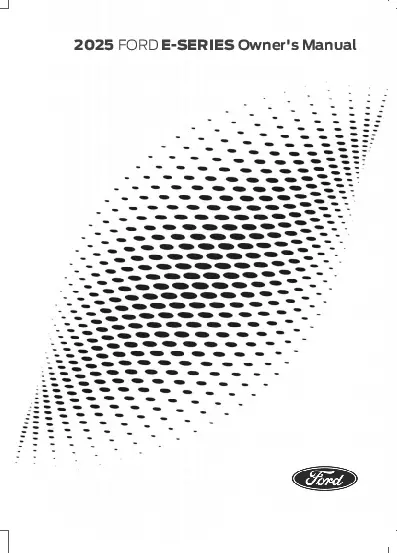2025 Ford E Series Owner's Manual

Table of Contents
2025 Ford E Series Overview
Introduction
The 2025 Ford E Series is designed to redefine commercial van performance and efficiency while providing maximum versatility for both business and leisure. With its robust construction, exceptional hauling capabilities, and advanced technology, the new E Series encapsulates everything that the Ford legacy stands for—durability, reliability, and innovation.
Powertrains
The 2025 Ford E Series offers a comprehensive selection of powertrains, catering to various needs and preferences. The base model features a 4.6L V8 engine, delivering a balanced combination of power and fuel efficiency. For those needing extra muscle, an optional 7.3L V8 engine is available, providing additional torque and horsepower for heavier loads. Both engines are mated to a smooth-shifting 10-speed automatic transmission that enhances overall driving dynamics and reduces fuel consumption.
Trims
The E Series comes in multiple trims to suit different business or personal requirements. The base XL trim focuses on essential functionality, while the XLT adds extra features such as alloy wheels and enhanced interior comfort. For more luxurious appointments, the Limited trim elevates the experience with premium upholstery, advanced infotainment systems, and additional safety features, ensuring that drivers and passengers enjoy every ride.
Features
The 2025 Ford E Series is packed with advanced features for convenience, safety, and connectivity. Standard features include a rearview camera, adaptive cruise control, and Ford's latest SYNC infotainment system, complete with smartphone integration. Higher trims boast additional luxuries such as a premium sound system, heated seats, and lane-keeping assistance, ensuring a driving experience that is both enjoyable and secure.
Owner's Manual
The Owner's Manual for the 2025 Ford E Series is designed for easy navigation, providing essential information about vehicle operation, maintenance, and troubleshooting. It includes detailed diagrams, safety information, and a comprehensive guide to the features and technology available in your van. This resource ensures that owners can maximize their E Series experience while maintaining optimal performance and safety on the road.
User manual download
The Ford E Series owner manual for the 2025 model year is to be found in PDF downloadable format on this page. The owner manual for the model year 2025 is free and in English, but the repair manuals are usually not easy to get and may cost more.
Manual Questions
Fill the form below and someone will help you!

